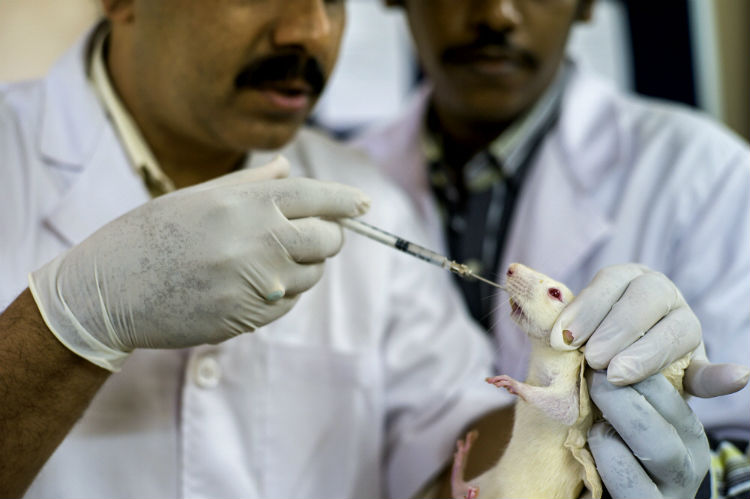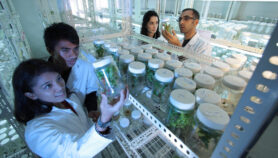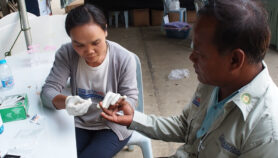By: Crispin Maslog
Send to a friend
The details you provide on this page will not be used to send unsolicited email, and will not be sold to a 3rd party. See privacy policy.
While global R&D spending is at a new high, small South-East Asian economies are laggards, reports Crispin Maslog.
The good news is more countries are now investing heavily in research and development (R&D). The bad news is it is the rich countries that are investing big, while the poor countries that need it more are not.
Global spending on R&D has reached a new high of $1.7 trillion, with 10 countries accounting for 80 per cent of spending, according to the UNESCO (UN Educational, Scientific and Cultural Organization). And countries have pledged to increase public and private R&D spending and the number of researchers by 2030.
UNESCO released last month (14 September) a new data tool showing the global leaders and emerging players in R&D. In releasing the data tool, UNESCO Institute for Statistics (UIS) director Sylvia Montoya stressed that “innovation is key to achieving each of the Sustainable Development Goals (SDGs). So it is essential to track R&D investment in the knowledge, technology and thinking that drives innovation in countries.” [1]
It is no surprise that the giant countries, in terms of population and economic clout, top the UNESCO list of nations that have invested massively in R&D. The United States leads 15 countries in R&D spending in purchasing power parity (PPP) dollars estimated at — US$457 billion, with its business sector contributing 70.6 per cent (see Table 1).
Two Asian economic giants — China and Japan — follow closely behind in second and third place. Asia and Europe both have four countries in the top ten of UNESCO R&D spenders, with the bulk of R&D investments coming from their respective business sectors except for India which sits at seventh place.
Table 1. Top 15 Countries in R&D Spending ($PPP)
| Rank | Country | Dollars (B) | % Business Sector |
|---|---|---|---|
| 1 | United States | 457 | 70.6 |
| 2 | China | 369 | 77.3 |
| 3 | Japan | 166 | 77.8 |
| 4 | Germany | 106 | 68.1 |
| 5 | Korea | 74 | 78.2 |
| 6 | France | 58 | 64.8 |
| 7 | India | 48 | 35.5 |
| 8 | United Kingdom | 44 | 64.4 |
| 9 | Russia | 44 | 59.6 |
| 10 | Brazil | 40 | N/A |
| 11 | Italy | 27 | 55.7 |
| 12 | Canada | 25 | 49.9 |
| 13 | Australia | 22 | 56.3 |
| 14 | Spain | 19 | 52.9 |
| 15 | Netherlands | 16 | 56.3 |
R&D investment lessons from China
China is showing a surprising average annual growth rate of 18.3 per cent in R&D spending, compared to just 1.4 per cent for the world’s upper middle-income countries, according to the UIS.
China’s R&D spending only amounts to 2 per cent of its GDP, but the country is pouring the PPP equivalent of about US$$369 billion into this sector each year.
There are lessons in R&D investment to be learned from China.
The Chinese government encourages Chinese companies to create and own technologies, and also transfer technology from abroad, according to American author and editor Brenda Wiederhold. [2]
“As a result, a number of multinational technology and pharmaceutical companies have taken advantage of this policy” to transfer facilities from India. The Chinese government owns all top-ranked academies and has tripled its investment in education in the past 12 years, she notes.
These universities emphasise research. “Of the five million students graduating per year, about one million are research students. And China’s academicians file more patent applications than those in any other country — 16 per cent compared to 4 per cent in the United States,” Wiederhold adds.
Strong spending from business sectors
What these top 15 countries have in common is strong spending from their business sectors. The other main sectors which contribute to R&D investment are government, universities and private non-profit entities like foundations.
A major impression one gets from this list of investment achievers is that most are wealthy countries with well-developed business sectors.
The less developed countries of ASEAN — Cambodia, Indonesia, Laos, Myanmar, the Philippines and Vietnam — do not have strong business sectors that can invest or afford huge resources for R&D. Most are still in the agri-business stage of development, with another foot in the manufacturing industry, particularly the drug industry.
Learning from Singapore
These countries could learn a lot from the case of Singapore, a model for small countries which competes in a big man’s game. A city state with no natural resources, Singapore started by recognising the importance of human capital. Its government has developed the tiny country into an international hub for R&D in South-East Asia. [3]
The key is careful planning and determination. In 2004, the government formed the Ministerial Committee on Research and Development (MCRD), chaired by the Prime Minister no less.
The government identified three strategic areas of R&D — environmental and water technologies (clean water and clean energy), biomedical sciences translational and clinical research, and interactive and digital media. It decided to invest US$16.1 billion over a five-year period (2011-2015) with a specific goal to grow expenditure on R&D to 3.5 per cent of GDP by 2015 through increased private sector R&D spending.
Although Singapore fell short of its goal, attaining only 2.2 per cent of GDP spending, it still landed in 15th place on the UNESCO ranking world-wide based on per cent of GDP (Table 2). The lesson here is to plan carefully, aim high, and if you fall short, keep going to stay up there.
Table 2. Top 15 Countries in R&D Spending as % of GDP
| Rank | Country | % of GDP |
|---|---|---|
| 1 | Korea | 4.3 |
| 2 | Israel | 4.1 |
| 3 | Japan | 3.6 |
| 4 | Finland | 3.2 |
| 5 | Sweden | 3.2 |
| 6 | Denmark | 3.1 |
| 7 | Austria | 3.0 |
| 8 | Switzerland | 3.0 |
| 9 | Germany | 2.9 |
| 10 | United States | 2.7 |
| 11 | Belgium | 2.5 |
| 12 | Slovenia | 2.4 |
| 13 | France | 2.3 |
| 14 | Australia | 2.2 |
| 15 | Singapore | 2.2 |
SDG 9: Boost R&D spending
Globally, there were almost 1,083 researchers for every one million people in 2013. UIS data show this number going down for middle-income countries between 1996 and 2013 — a downward trend with global implications for sustainable development.
This downward trend bodes ill for development in the underdeveloped world. The UN needs to address this issue as it develops its next set of Sustainable Development Goals.
This is why SDG 9 calls on governments to promote sustainable industrialisation and innovation by ramping up spending on R&D and increasing the number of researchers.
The main solution to this chicken-and-egg dilemma is in national governments. Governments in these less developed countries should take the lead in R&D spending. The less developed countries must push hard for business incubators and for science and industry parks to bridge the gap between university research labs and industry.
In addition, the UN needs to jump start R&D spending in the poorer and underdeveloped regions of the world. A massive and specific R&D aid programme should do the trick.
Rather than merely broad economic development aid, we urge a specific aid programme to help universities in the region develop their research facilities and release senior faculty and staff from teaching to do full-time research. Junior faculty can take on the bulk of teaching.
Crispin Maslog is a Manila-based consultant for the Asian Institute of Journalism and Communication. A former journalist, professor and environmental activist, he worked for the Press Foundation of Asia and the International Rice Research Institute.
This piece was produced by SciDev.Net’s South-East Asia & Pacific desk.
This article is part of a series on the future of research funding in low and middle income countries supported by the International Development Research Centre
References
[1]UNESCO How much do countries invest in R&D? New UNESCO data tool reveals emerging players (UNESCOPRESS, 14 September 2016)
[2] Brenda K. Wiederhold Investment in Innovation: Lessons Learned from China (Cyberpsychology, Benavior, and Social Networking, Volume 14, Number 4, 2011)
[3] Singapore-German Chamber of Industry of Commerce (http://www.sgc.org.sg/fileadmin/ahk_singapur/DEinternational/IR/diffIR/Research___Development_2014.pdf. Retrieved Sept. 29 2016)














